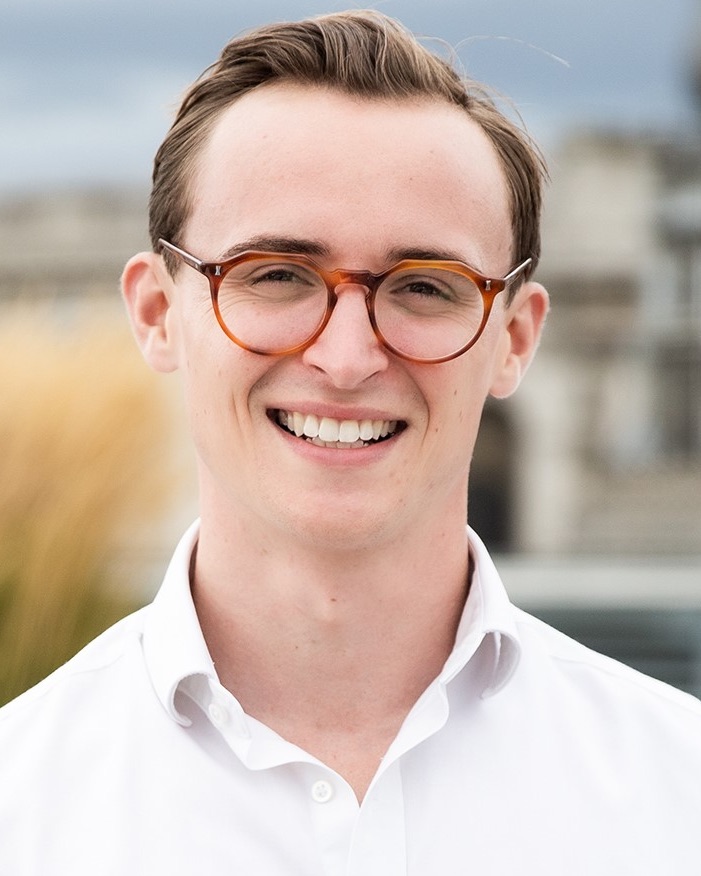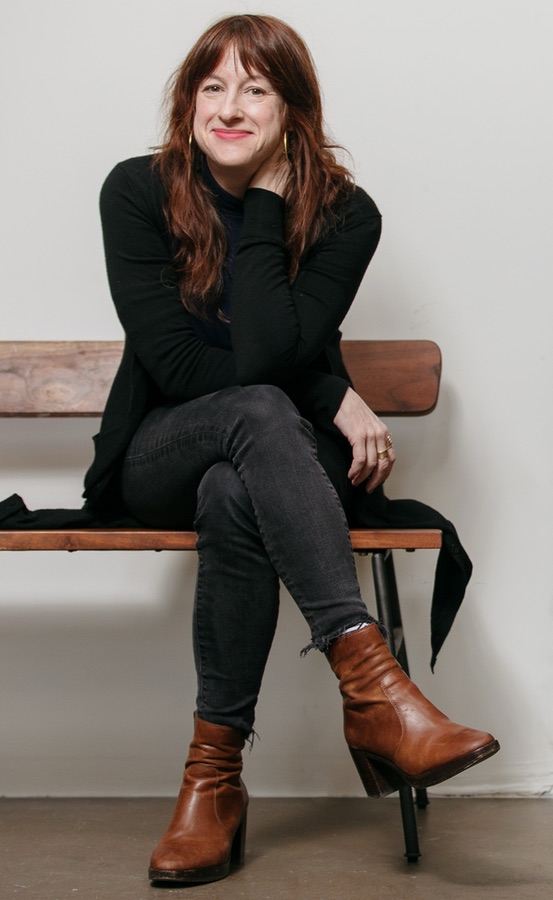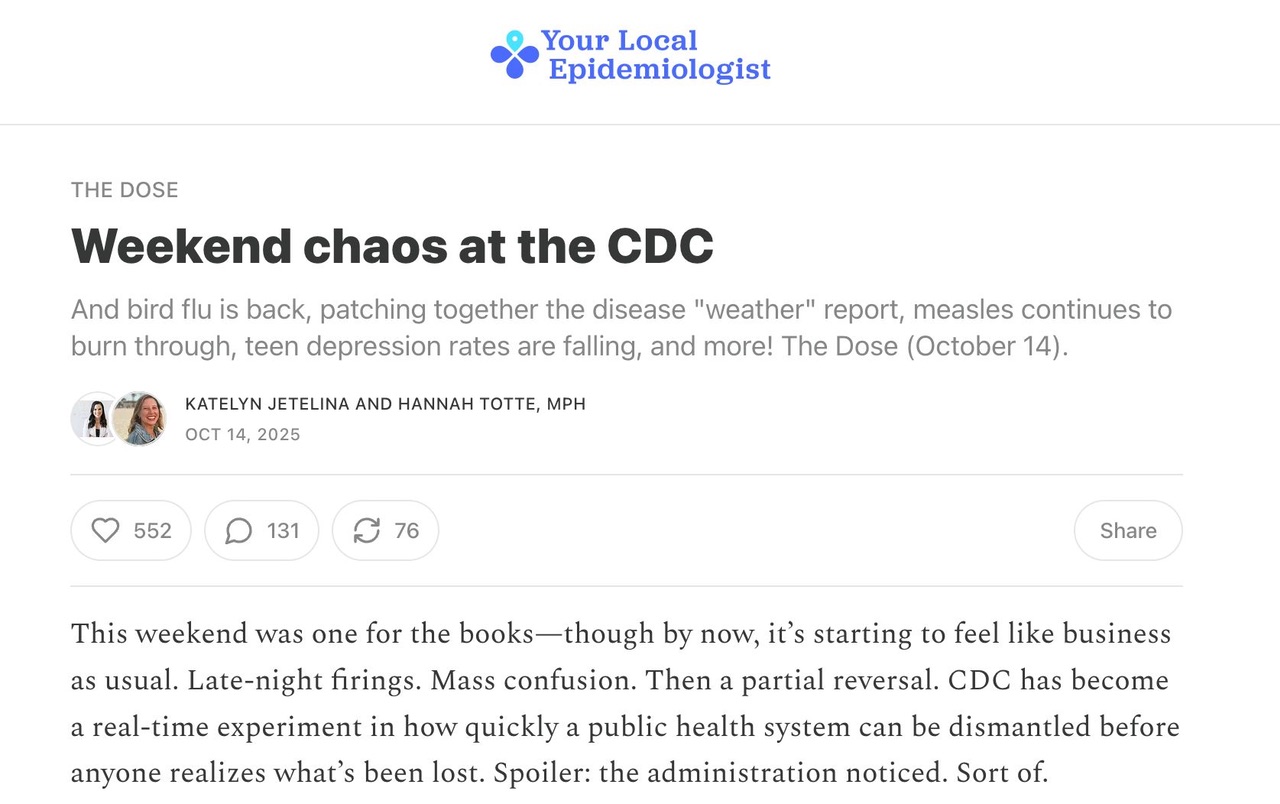Jonah Fialkow has never considered himself to be a sports journalist. He sells beer and hot dogs as a vendor at Wrigley Field, the home of the Chicago Cubs, after all. But he also has a TikTok account with more than 50,000 followers.
There’s little objectivity in his work (he’s such a big Cubs fan that he wrote his college admissions essay about Wrigley Field), and some of his commentary, that sometimes include clips of him selling margaritas during a game, might make a traditional journalist cringe. But there’s no disputing Fialkow has a following that draws Cubs fans looking for news from across the country.
“I had some [fans] from California, some from Minnesota come up to me, they’re like, ‘Oh yeah, this is how I keep up with Cubs news,’” Fialkow said of his account. “So, in a way, I mean, I’m kind of like this micro-Cubs sportscaster posting the ins and outs and also the actual results of the games on a daily basis.”
Meanwhile, in the Chicago dining and restaurant scene, Erica Noblecilla has a TikTok account with nearly 100,000 followers and an Instagram account with nearly twice as many.
An obsessive Food Network enthusiast, she moved to Chicago in 2020 and since 2023, her full-time career has focused on her work as an influencer. Her account (@EricaEatsEverything) features her experiences dining at dozens of locations across Chicago and includes some reviews of what she’s tried.
Like Fialkow, her goal isn’t to adhere to a code of journalistic ethics — though she did note that she rarely dines at restaurants that pay her to show up. Rather, her focus is on sharing her perspective on the immense diversity of food and dining across Chicago. And her following speaks for itself.
So how is it that people like a Cubs hotdog vendor and a food influencer have gained such large followings, sometimes at the expense of more traditional local news outlets?
“Honestly I think it comes down to trust,” Noblecilla said. “I think that the media that we see on the TV, we don’t necessarily feel as close to the reporters or the medium if you will. But then on social media, thinking about content that I have created and then also thinking about it as a consumer of content, I genuinely just trust their opinion, and I do really seek out content that comes off organic and authentic.”
What one decides is organic and authentic is subjective, of course, but this validates a clear trend.
In the Medill Local News Initiative’s 2025 survey of the Chicago-area landscape, roughly one-third (30%) of respondents said they consume local news daily from content creators on social media or on platforms like Substack; just 18% turn to local newspapers, suggesting content creators are playing an increasingly more consistent role in the audience’s day-to-day news consumption habits.
Along those lines, the research also found that smartphones trumped television as the preferred device to consume local news.
These data points confirm a trend that’s only becoming more and more noticeable: content creators and news influencers are delivering a product that’s more attractive to many consumers than more traditional news products, especially to the youngest demographics.
But can these news creators fill the gaps created by the disappearance of a local newspaper or radio station?

Potentially, says George Montagu, the head of insights at FT Strategies, which recently released a report in collaboration with the Google News Initiative about news creators. But it’s not a simple one-for-one swap.
He cited a creator in Edinburgh, Scotland, Michael MacLeod, whose Edinburgh Minute Substack serves as a news roundup for everything happening in Edinburgh to more than 25,000 subscribers. But without other reporters on the ground telling stories, MacLeod’s work would be nowhere as comprehensive.
“He is essentially — and these are my words not his — very reliant still on lots of people doing the on-the-ground news gathering exercise to enable him to do his brilliant roundups that provide a lot of value to audiences,” Montagu said. “So, is there a world in which [news creators] would be able to entirely replace reporters and local news organizations? Not right now I don’t think because it’s so much work to do that [extra] primary [reporting]. However, do I think there’s an opportunity for creators to bring that [reporting] to life and engage more people in local journalism? Undoubtedly, yes.”
News creator frameworks
The FT Strategies/Google News Initiative report identifies three different types of news creators: investigators, who do more of their own original reporting; explainers, who provide easy-to-understand breakdowns of topics drawn from their expertise in a particular topic; and commentators, who provide their personal opinions on any number of areas.
This framework is fluid, though, so different creators might incorporate elements of all three into their work. But of all the categories, those who fall under the investigator umbrella produce work that most closely mirrors what a local reporter would produce.
However, their ability to fully fill that role, when local news organizations close down or substantially cut staff, isn’t quite that simple.
“It depends on the size of the locality,” Montagu said. “In a local village or a small town, I think one person probably could do a pretty good job of being the voice of what’s going on with the help of a very engaged community that are doing a lot of sourcing and news gathering for them voluntarily.”
In other words, with help from community members who let the creator know a new restaurant is opening or that a road will be closed because of construction, it can be done. But news creators who do investigative work often focus on very specific topics, so their reach isn’t as wide-ranging as it might be for a more traditional investigative journalist.
“The reality is that a lot of those investigators that we mentioned in the report are more hyper-topic focused, [like] ‘I’m really obsessed with consumer tech; I’m just going to really dive deep into a lot of consumer tech and report on it and do the original, primary reporting,’” Montagu said. “We see that less in terms of trying to be an investigator across an entire region or large area.”
Transparent and engaging
Three key factors helped accelerate the rise of these news creators and influencers: the COVID-19 pandemic, when people were isolated at home looking for connection; the continuing decline of trust in institutional media; and the rise of the creator economy, where it became possible to grow and monetize audiences on platforms like TikTok and YouTube.
There are also factors to consider when trying to understand the simultaneous decline in traditional media and the rise of creators.
While the media is often viewed as too elite, creator-model journalists are seen as more intimate and informal. It’s not uncommon, for example, to see creators recording TikToks in their kitchen, their car or even under their desk — or, to have a newsletter sent straight to your inbox from a specific creator.

“They’re talking to you like they’re explaining something to you or to a friend or to another student over coffee in the student center, so it’s just much more approachable,” said Liz Kelly Nelson, who runs Project C, an organization that works with independent journalists and content creators. “Traditional news organizations, although many of them will say that they are impartial, are not viewed that way by audiences. They are viewed as biased, and therefore, untrustworthy because they are seen as biased presenting themselves as impartial.”
Take Dr. Katelyn Jetelina’s “Your Local Epidemiologist” newsletter as an example. With nearly 400,000 subscribers, Jetelina describes her newsletter as “Providing a direct line of ‘translated’ public health science to you, so you can take action for your community’s health,” and her work touches on everything from vaccine guides to measles outbreaks to pharmaceutical ads.
In the world of politics, there’s Matt Kiser’s “WTF Just Happened Today? ” which summarizes the day’s news into a single newsletter delivered to more than 200,000 subscribers. Kiser previously worked for established news entities including Forbes and Business Insider.
Traditional news sources can also be associated with consistently sharing depressing information — it’s partly where the term “doom scrolling” originates. Meanwhile, creators tend to add a playfulness to even the most serious topics, Nelson said.
And, traditional sources might be viewed as irrelevant by large segments of the audience that don’t see themselves represented, while the diversity and breadth of the creator space lends itself to a variety of identities and perspectives represented across platforms.

“Creators are transparent and engaging, and so they are very transparent, by and large, about where they stand on an issue, what their lived experience is and why that colors how they are reporting on something and how they are relating information,” Nelson noted. “And that is seen as much more trustworthy, even if I disagree with the creator that I am consuming information from, at least they are telling me exactly where they are coming from.”
“I think a lot of news organizations are still very much convinced that they need to present themselves as impartial,” Nelson added, “but it’s not working for them.”
Opportunities for collaboration
Joy Mayer, executive director of Trusting News, a nonprofit that collaborates with news providers to better understand and develop trust with audiences, echoed the idea of traditional news organizations missing the mark in some instances.
“I’m not super interested in journalists talking to each other about whether something is journalism, because that’s not the conversation the public is having,” she said. “The public is trying to figure out, can I trust this information?”
“Often, content creators feel like a guide through a very confusing information ecosystem,” she added. “It can feel efficient to find a guide, a trusted friend. … The same role that I might fill in my own social network where people show up at a book club and say, ‘Joy, can you please help me make sense of this?’ I think that that is something people really enjoy getting on social media and really enjoy getting from somebody who shows up in a very human way, a very authentic way.”

There’s also an element of open dialogue, with many creators soliciting comments and questions from their audiences.
“It’s not just that people feel approachable,” Mayer said. “It’s that they are approachable and people know they can talk back.”
At the local news level, these types of influencers have always existed in some form. Think of a meteorologist who you turn to for the latest hurricane forecasting or the long-time columnist you turn to for their take on sports or politics.
And in less formal news contexts, there are people who run Facebook community groups or who serve as religious leaders or who simply frequent the local coffee shop and act as ‘connectors’ in their neighborhoods.
Now, there’s an expanded opportunity for local news outlets to partner with some of these influencers and leverage their followings to bring in new audiences.
In New York City, for example, THE CITY — a nonprofit news organization that serves the five boroughs — partnered with comedian Gerrie Lim to spread the word about the city’s upcoming mayoral primary election and educate voters about what they should know before they cast their ballots.
Compared to a 2024 baseline, THE CITY saw anywhere from a 200-400% increase in engagement (likes, shares, bookmarks) on its videos with Lim.
In Pittsburgh, Public Source worked with Leon Ford, a local activist, on a first-person narrative story about his experience being accidentally shot by a police officer and the subsequent time he’s devoted to work with local police departments to improve community policing practices.
With an increased prevalence of creators and influencers in the media ecosystem, expect to see these types of partnerships continue.
“They have an audience that follows them, and the ones who most news organizations want to work with, they have followers who are really engaged with their content,” said Marlene Harris-Taylor, the director of community engagement for the American Press Institute. “When they share something or work with a newsroom or partner or [collaborate] with a newsroom on something, you’re going to reach a group of people who are really engaged with that person and who will pay attention.”
And as these partnerships become more and more common, don’t be surprised to see newsrooms adopt strategies that mirror those of successful creators.

“The newsrooms will continue to learn from content creators as they do these collaborations and will then see the value in it and then either hire people from the content creator world or train their own people to be content creators in ways that are more friendly and get more engagement in views on social media,” Harris-Taylor said.
That’s not to say there isn’t skepticism, however. As Harris-Taylor pointed out, these are collaborations, not just a news outlet assigning a freelancer a story. As a result, many newsrooms worry about creators publishing content that doesn’t align with their values or might be downright outrageous.
“‘[As] this established and revered institution in our community, how can we present things on this site that’s just silly?’” Harris-Taylor said is among the concerns she’s heard from newsrooms about working with creators.
But as news consumption habits evolve and organizations need to find ways to capture the attention of younger audiences that aren’t used to reading print newspapers, strategically finding these collaborative opportunities can pay dividends.
Financially viable?
Another big area to consider with news creators involves financial viability, something Montagu noted stood out to him during the dozens of conversations he had with creators in the process of putting together FT Strategies’ report.
“I kind of imagined these YouTube creators and other creators, particularly ones with hundreds of thousands or millions of followers, as making really good money and probably living a good lifestyle, and unfortunately, one of our reflections was that’s not necessarily the case,” he said.
Some with the largest followings might make a few thousand dollars per month, supplemented by ad revenue from the platforms they use, but that’s often not enough to cover their expenses.
“Coming by a sponsorship deal which is like the panacea is really difficult because brands aren’t really that inventive about who they spend their money with, even less so their agencies quite often,” Montagu noted. “And building a genuine subscription model is for the few not for the many. So, business model dynamics are really hard.”
Even for Fialkow and Noblecilla who are less news creators and more straight-up influencers, there’s no clear path to sustainability. Fialkow has a full-time job, in addition to his beer vending and TikTok-ing. Noblecilla does not, so there’s added pressure to find ways to use her platform to make a living.
And while it’s clear that the ways in which people engage with and consume news and information is continuing to evolve, there’s not necessarily a one-size-fits-all model to creator-model journalism — or how newsrooms can leverage its growing prevalence.
“In a utopia, you could say, ‘What if we just have a 10:1 ratio of 10 creators in an area who are able to do their own thing and replace one news organization.’ The only problem is, it’s not financially rewarding enough to justify a load of people going and doing that. More people means more fragmented audiences and more fragmented subscriptions,” Montagu said. “It could be a locality of a bunch of different creators coming together and creating a bundle. But then, you get back to the situation of like, ‘Hey, that kind of looks like a news organization.’”
